Ferrari’s Throwback 12Cilindri Is an Exercise in Tasteful, Purposeful Design
Last week, Ferrari gave us yet more proof that whoever coined the phrase “Money can’t buy happiness” has probably never been anywhere near one of its showrooms.
Of course, most, if not all, Ferraris are special cars, almost by definition. Yet Maranello’s latest creation, the 12Cilindri, is perhaps an even more fascinating object than usual.
On the one hand, it’s a genuine technological tour de force. It’s got active aero, independent four-wheel steering, plus a whole host of performance-enhancing electronic systems. But on the other hand, it’s also a delightfully old-fashioned proposition. After all, it’s a big front-engined, rear-wheel-drive grand tourer with a bonnet large enough to have its own zip code, and the only battery in sight is there to start up its massive engine.
And what an engine it is.
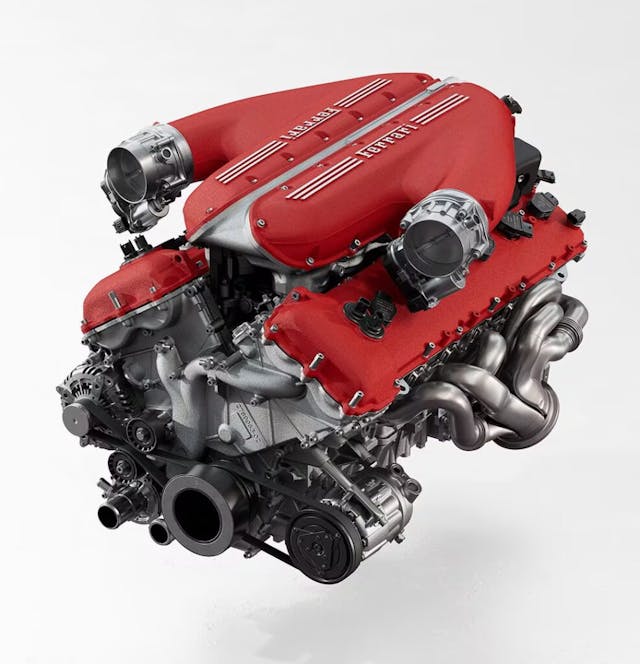
A 6.5-liter naturally aspirated V-12 that can rev up to 9500 rpm is simply Ferrari doing what it does best. And with such a glorious, unapologetic tribute to the gods of internal combustion under the hood, it’s no wonder Ferrari elected to give the engine top billing, even if that meant testing its international customers’ mastery of the Italian language.
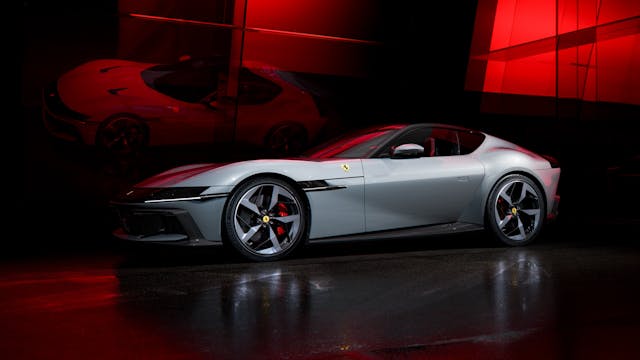
The new 12Cilindri picks up right where its predecessor, the 812 Superfast introduced in 2017, leaves off. But it also marks a significant and welcome step up in the aesthetic department.
In the recent past, Ferrari’s Centro Stile hasn’t been immune to the odd slip-up, and in my view, the old 812 counted among those. But over the last few years, Flavio Manzoni’s crew in Maranello really seems to have hit its stride.
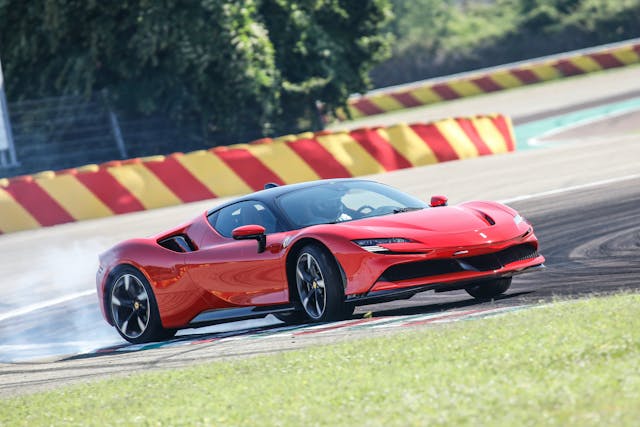
Beginning with the SF90 in 2019, the Prancing Horse’s styling team has knocked out a sequence of genuinely outstanding designs, from the gorgeous 296 and Roma up to and including the impressive Purosangue. The new 12Cilindri definitely is no less accomplished a design, but to fully comprehend what makes it so captivating, let’s start from the fundamentals.
As I’ve already stressed in previous articles, beauty in car design is, first and foremost, a matter of proportions. But I have to say that, in this case, Ferrari’s designers have had it easy.
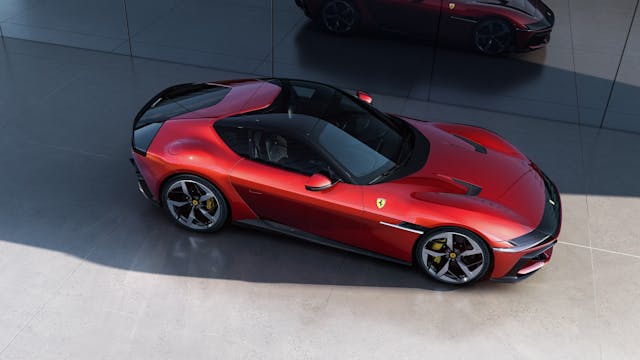
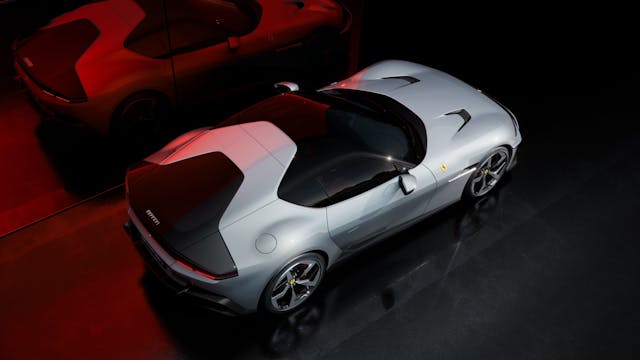
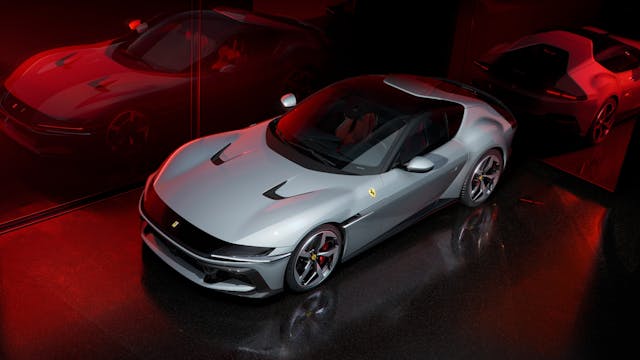

Being a wide, low-slung two-seater packing a large engine placed well behind the front axle, the Ferrari 12Cilindri is the automotive equivalent of a supermodel: naturally endowed with attractive proportions. With such a technical package, Ferrari’s stylists already had all the makings of a pretty car before drawing a single line.
Still, even such a big head start won’t count for much if you don’t know what you’re doing, and one has to look no further than the Mercedes-AMG SLR to see what I mean.
Thankfully, the folks at Maranello rose to the challenge and created a perfectly sculpted volume that reminds me of one of my favorite Ferraris, the Monza SP roadster, but with a sharper, more contemporary feel. For example, I love the way the lower bodyside’s surface twists in a well-controlled manner from the front wheel arch to the rear, creating an interplay between light and shadow that visually “lightens up” the car.

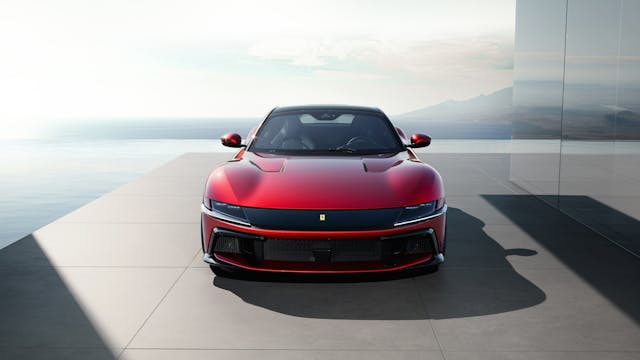
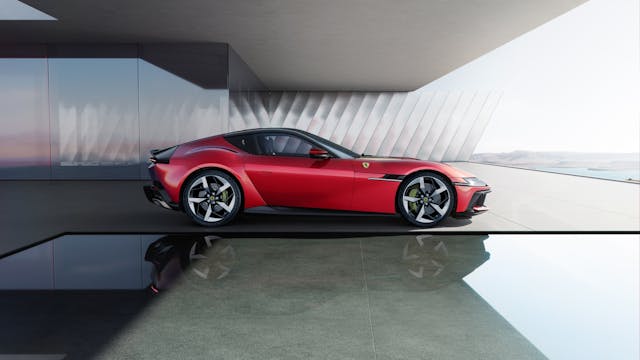
I also appreciate that Ferrari’s stylists kept the car’s volume remarkably clean. In car design jargon, a “character line” is a crease on the car’s volume serving no purpose other than aesthetics. There are precious few on the 12Cilindri’s curvaceous body, and the main ones are the two running parallel and “breaking” the door’s surface just above the handle.
However, by deftly tying these lines to graphic elements such as the shutline of the clamshell hood and the front and rear lights, Ferrari’s designers have created a continuous line that “guides” our eyes around the car and puts it all together into a cohesive whole.
But, without a doubt, what stands out the most about the new Ferrari’s design is its rather bold graphics. That’s the term vehicle designers use when referring to everything that “cuts” into the car’s volume, like shutlines, air intakes, the glazing’s contours, and lights.
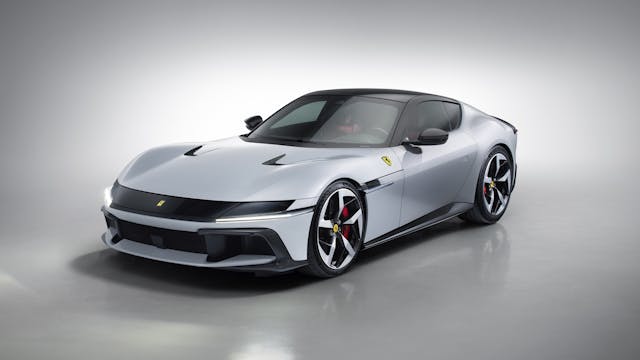
At the front of the car, Ferrari’s designers made a wise decision by using a clamshell hood instead of having unsightly shutlines cutting through the 12Cilindri’s voluptuous fenders. The trapezoidal headlight units are visually connected by a black trim piece, which certainly isn’t a novel idea but is used to great effect here, paying a tasteful homage to the full-width acrylic panel used on the legendary 365 GTB/4 Daytona.
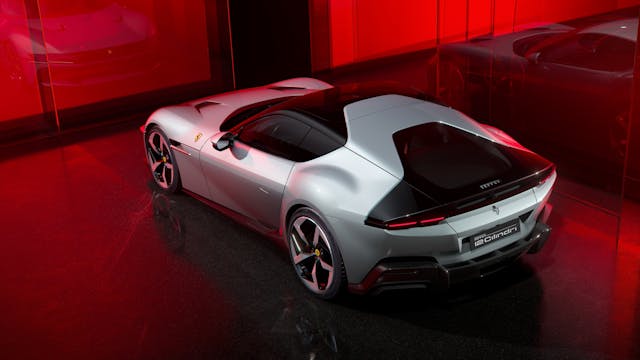
By contrast, Maranello’s stylists’ approach to the 12Cilindri’s rear-end design is decidedly more radical. The two active spoilers get a black finish to visually merge with the rear window and create an arrow-like graphic on the roof. That won’t be to everyone’s taste, and it does render the 12Cilindri very color-sensitive: Spec yours in black or any other dark shade, and it’ll all become nearly invisible.
Still, if you really don’t like it, Ferrari has you covered.

In a surprising break from usual practice, the company presented the spider variant alongside the coupe. When closed, the retractable roof panel fits seamlessly with a pair of flying buttresses to give the 12Cilindri Spider a similar profile to is hardtop stablemate. The two active rear spoilers and the small decklid between them still get a contrasting black finish, but the effect isn’t nearly as convincing as on the coupe.
Italians are known to take great pride in Ferrari and its successes. And, being a citizen of this small country in the middle of the Mediterranean, I’ll confess that I’m no exception. Moreover, as an enthusiast who has witnessed the near-terminal decline of Italy’s volume car industry over the last few decades, the fact that there’s still a small company in Maranello building some of the world’s finest rides does indeed give me some solace.
Just like nearly everyone else, I’ll never own any Ferrari, let alone a 12Cilindri. But I’m glad it exists, and rest assured that when one of these roars past me in traffic, you’ll find me smiling and gazing longingly at its curves while I think: “We’ve still got it!”
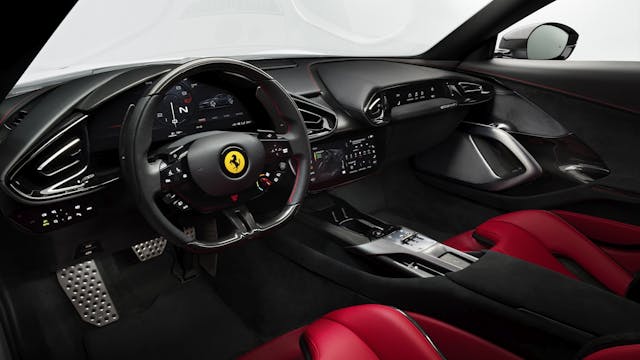
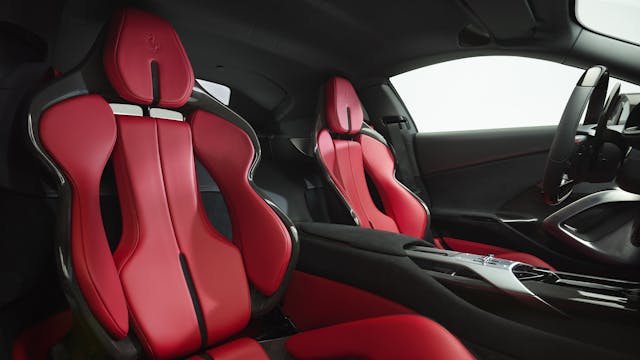
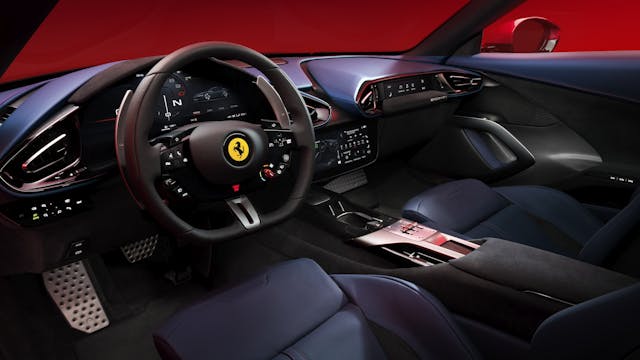
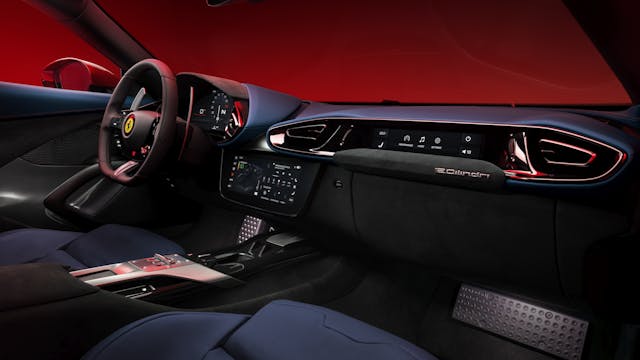

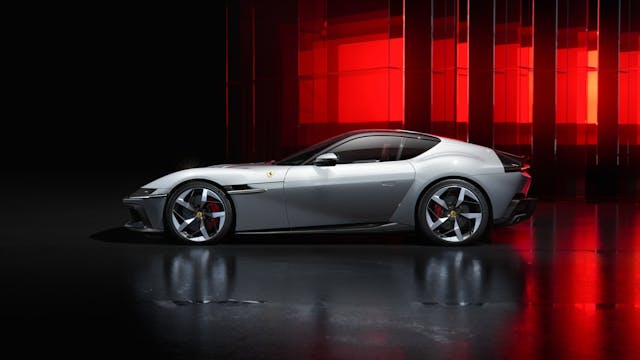
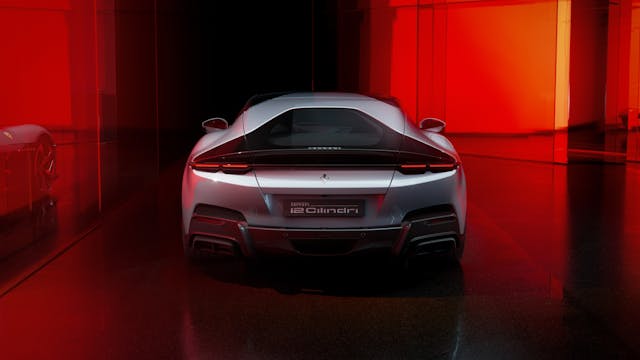



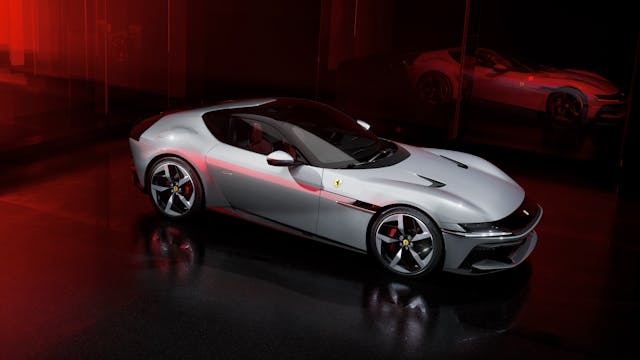

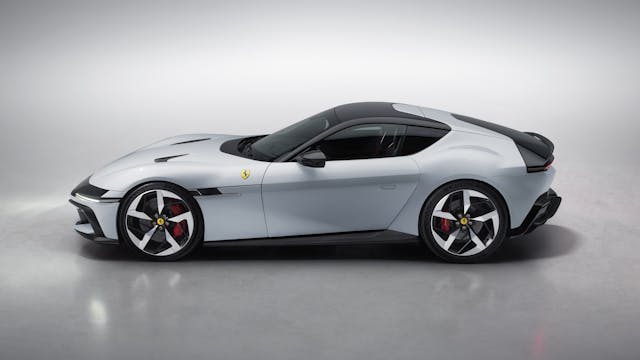
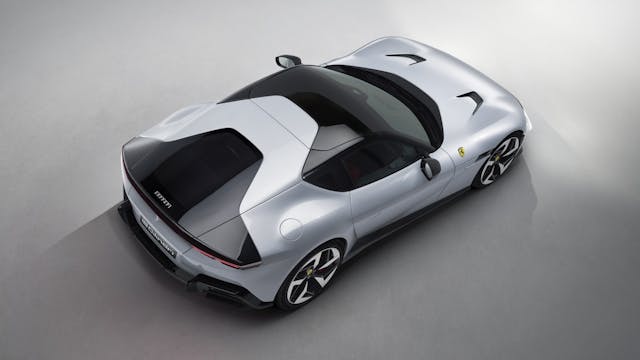





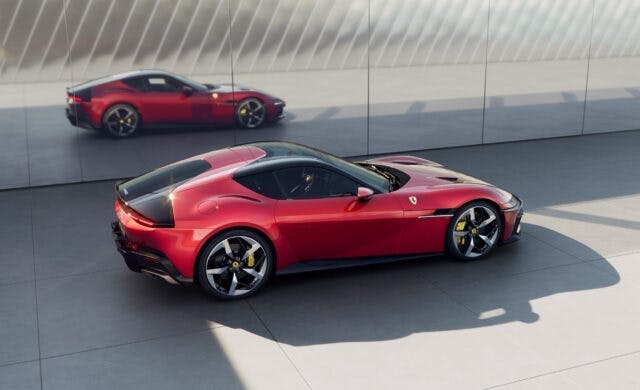
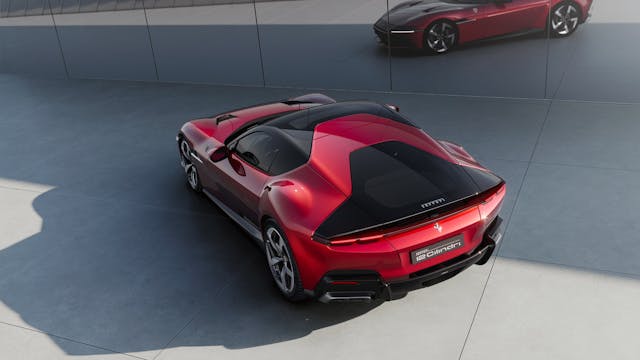
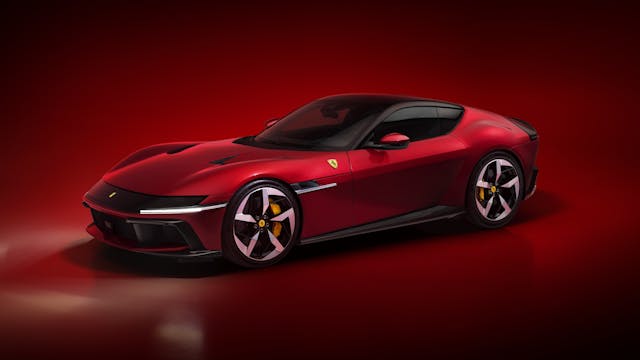

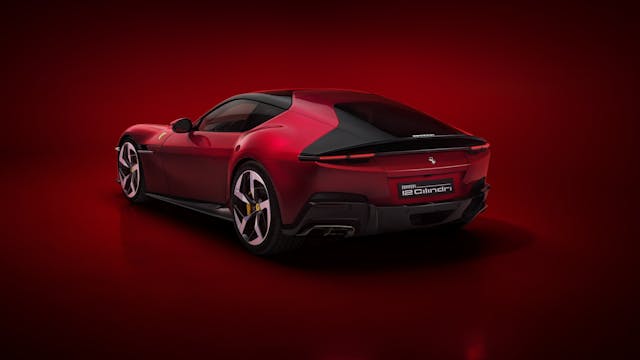
Matteo Licata received his degree in Transportation Design from Turin’s IED (Istituto Europeo di Design) in 2006. He worked as an automobile designer for about a decade, including a stint in the then-Fiat Group’s Turin design studio, during which his proposal for the interior of the 2010–20 Alfa Romeo Giulietta was selected for production. He next joined Changan’s European design studio in Turin and then EDAG in Barcelona, Spain. Licata currently teaches automobile design history to the Transportation Design bachelor students of IAAD (Istituto di Arte Applicata e Design) in Turin.
***
Check out the Hagerty Media homepage so you don’t miss a single story, or better yet, bookmark it. To get our best stories delivered right to your inbox, subscribe to our newsletters.



Not a fan of the hatch. The roadster is sweet.
Nicely done. I love the interplay of color and design elements. My only criticism, and I see a lot of brands doing this of late, is the jutting lower valence around the exhaust. It looks cheap and odd.
The name is kinda dumb…..can’t we just call its a 665 GTB Daytona or something?
I’ll take a black spyder in the Miami Vice color scheme.
As a car nut, if the 12Cilindi doesn’t get your blood going, you’re dead. This is quintessential Ferrari, exactly what Enzo’s legacy is all about. As Peter DeLorenzo writes in his AUTOEXTREMIST blog regarding the 12Cilindri, “Leave it to Ferrari to remind us what this business should be all about.” All hail the 12Cilindri, what may well be the very last V12 Ferrari. Ever.
The piano black bits on the front and the little rear wings would look better body colored. either way this should sound amazing.
If they REALLY wanted a throwback, they would offer that big normally aspirated V12 with a manual transmission and associated gated shifter! But hey, I’m probably not their target demographic.
It’s beautiful from a old Daytona fan. I love GT’s. I thought the 812 was terrific. This is special. Coupe only for me. Now where’s that lottery ticket?
I have owned four modern Ferraris (458 Italia, 488 GTB, 812 Superfast, and a F8 Tributo that I still have) and love the engineering and style of each of these.
However, I agree with the author that some of the earlier 21st Century Ferrari designs looked awkwardly like giant shoes, or something else not-Ferrari-esque in terms of sleekness and beauty. Thankfully, the in-house design team has recently hit their stride, and the SF90, Roma (except for its grille) the 296 GTB and this car are stunning.
But, what about some more technical info in the article? What platform is the new car based on? Stretched Roma? How about dimensions, curb weight, performance data (even if just estimates)?
I assume that the fist two years’ of production have already been sucked-up by the A-List of Ferrari owners, but I’ll bet that the low-mile pre-owned 12Cilindri market will hit fast and furiously, at a “Market Adjustment” of $250-$400k over-sticker. For the last of the normally-fueled V12s…I wouldn’t doubt it.
I recently sold my Superfast, and am now glad that I did. I bought it fully expecting it to be “the last of the V12” Ferraris, but then the Purosangue took that away, and now this new model pushes the Superfast even further down the chain.
Don’t get me wrong. I loved the Superfast. The engine and exhaust sound (especially revving in a long tunnel or your own garage) is like having your own personal F1 race. Amazing mid-high rpm pull and very long-legged (211 mph, I think they claim) although it desperately needs a 8th gear for more relaxed cruising rpms.
My only wish for the modern Ferraris is that they’d do away with that black-faced Haptic Touch control layout. It is maddening to try and use at a glance, even if you’ve had the car a while, and it causes you to look away from the road rather than just feeling where some particular control is and then easily adjusting that.
I realize that Ferrari plays their cards very tight to their metaphoric vest, but please dig (since you’re in the homeland, Mister Writer, correct?) for more stats. I assume the acceleration performance will need to be at least on par wait the 812…after all it was named “Superfast”…but with perhaps a bit less end top speed.
I’ll make a wild-jazz projection of 0-62 mph (100kph) in 3.2 sec and a top speed of 208mph. So, the Superfast will eternally reign supreme in top speed (which saves those owners face, as well as the resale values.)
But, in every other way, the 12Cylindri should be better at everything. Except in the switchgear department!!
Save Our Switches!
Huge improvement over the video game monster look Ferraris of recent times. Looks great.